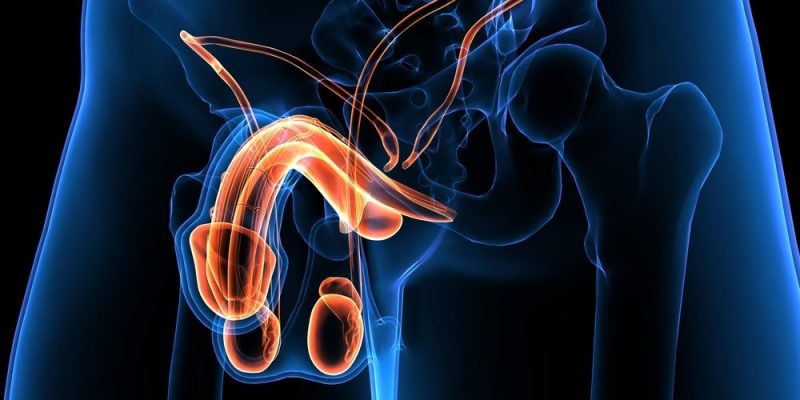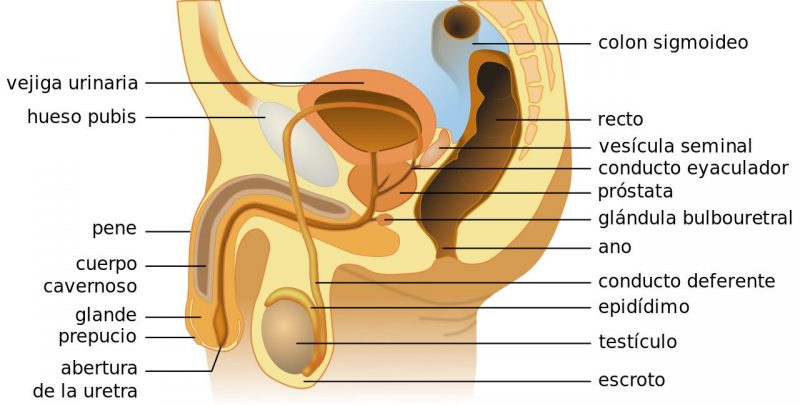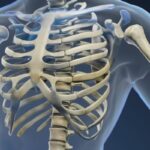We explain what the male reproductive system is and what its function is. Also, its most common parts and diseases.

What is the male reproductive system?
When talking about the male reproductive system, reference is made to the set of internal and external organs as well as ducts between them, which allow a man to have sexual relations and eventually reproduce with a woman.
Unlike the female reproductive system, the male It is mostly visible, outside the body and has the mechanisms to produce and introduce a load of sperm into the uterus (ejaculation) and thus fertilize the egg, giving rise to a zygote that, over time, will become a new individual. This method of reproduction is shared by humans with most vertebrate animals.
The male reproductive system is born together with the individual but It begins its hormonal and mechanical functions after puberty stage of adolescence in which the human being matures sexually and his body is ready for reproduction. Fertile men will be fertile throughout their lives, but their capacity for sexual interaction is limited to the possibility of erection, which decreases or is lost during the so-called third age (old age).
Function of the male reproductive system
As we have said, The primary biological function of the male reproductive system is reproduction. This goes through various stages that involve different organs, to the extent that sexual hormones are secreted that activate the process and predispose the body for reproduction.
Semen and sperm are produced in the testicles and prostate (10 to 14 days); The erection occurs through the filling of the shaft of the penis with blood and, finally, after ecstasy during intercourse, the seminal content is emptied through the urethra (ejaculation).
Parts and organs of the male reproductive system

The male reproductive system involves the following organs and ducts:
external organs (outside the body):
- Testicles The main organ of the system is responsible for producing both male sex hormones (mainly testosterone) and sperm (reproductive cells). It is housed in the scrotum, a covering of tissues and skin that covers and protects them.
- Penis It is the copulatory organ of the system, formed by three instances: the glans, which is the tip and the most sensitive region; the corpus spongiosum, tissue of which the glans is part and which supports the urethra during erection to allow the passage of semen; and the cavernous bodies, located in the upper part of the penis, which fill with blood and provide hardness and firmness to the erect penis. It is normally covered by the foreskin, a layer of skin that is part of the scrotum. It also serves the excretory system to expel urine from the body.
- Epididymis It is located at the meeting of the seminiferous ducts, and is responsible for the maturation and activation of sperm.
- Vas deferens They connect the epididymis with the ejaculatory ducts, allowing semen to escape.
internal organs (inside the body):
- seminal vesicles They produce an alkaline and viscous liquid whose purpose is to neutralize the acidity of the urethra (product of urine) and safeguard the sperm. This liquid is part of 40% of semen. The vesicles are located next to the prostate, behind the urinary bladder.
- Prostate This glandular organ is exclusive to the male gender and is located behind the rectum, right at the base of the urinary bladder. It produces much of the seminal content that nourishes the sperm on their journey to the uterus and also blocks the release of urine during intercourse, so that the excretory and reproductive functions do not mix.
- Urethra The duct that carries urine from the bladder to the outside of the body also serves in the case of men to carry semen to the outside.
- Bulborethral glands Also called Cowper's glands, they are located under the prostate and secrete precum, which cleans the urethral duct and neutralizes its acidity, paving the way for ejaculation.
Diseases of the male reproductive system
The male reproductive system can suffer from diseases such as:
- Phimosis It is a congenital narrowing of the foreskin, which does not allow the penis to emerge freely and usually causes pain and discomfort during sexual relations. It is usually corrected by circumcision.
- Cancer Tumorous malformations tend to particularly affect the prostate and testicles.
- Venereal infections. Such as herpes, human papillomavirus, syphilis, gonorrhea, AIDS and others, some of which produce recognizable local symptoms, such as pustules, purulent discharge or difficulties urinating.
- Prostatitis. Prostate enlargement is usually the product of bacterial infections, but also an indicator of deeper ailments such as Benign Prostatic Hyperplasia or cancer.





